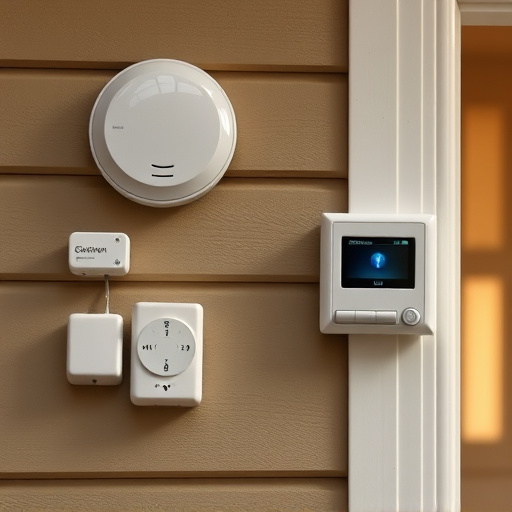DIY home alarms are gaining popularity as cost-effective, flexible security solutions without professional installation. Key components include sensors (door/window contacts, motion, glass-break), control panels, and monitoring options (self or professional). Top brands like Ring Alarm, Google Nest Secure, and SimpliSafe offer unique features catering to diverse needs. Setup involves assessing security requirements, choosing a kit, following instructions for wireless installation or secure connections, and personalizing alerts via the app. DIY alarms provide tailored protection for high-risk areas and assets, making them a flexible and effective security choice.
In today’s digital era, ensuring your home’s security is a top priority. Understanding DIY home alarms and their capabilities is the first step towards safeguarding your sanctuary. This comprehensive guide delves into the world of DIY security systems, offering insights on what to consider before purchasing. From top-rated models to a detailed setup guide, we explore the best DIY home alarms available, empowering you to make an informed decision for enhanced peace of mind.
Understanding DIY Home Alarms: What You Need to Know
DIY home alarms have gained popularity among those looking to enhance their security without professional installation. These systems offer a range of benefits, from cost-effectiveness and flexibility to the satisfaction of taking an active role in protecting your home. However, understanding the components and setup process is key to making an informed decision.
When considering DIY home alarms, you’ll typically find various sensors, control panels, and monitoring options. Sensors can include door/window contacts, motion detectors, and glass-break detectors, each designed to trigger alerts when specific events occur. The control panel acts as the brain of the system, processing signals from sensors and allowing users to arm and disarm the alarm, often through a mobile app or keypad. Monitoring options range from self-monitoring, where you handle alerts yourself, to professional monitoring, where a third party receives your alarms and can dispatch emergency services if needed.
Top DIY Security Systems on the Market: Comprehensive Reviews
In today’s digital era, DIY home security systems have revolutionized how folks protect their spaces. These comprehensive solutions offer a range of features, from motion sensors and door/window contacts to smart phone integration and 24/7 monitoring. Among the top contenders in the market are Ring Alarm, Google Nest Secure, and SimpliSafe.
Ring Alarm stands out for its extensive array of components and user-friendly app, making it ideal for those seeking a customizable DIY option. Google Nest Secure impresses with advanced smart home integration and powerful security features, while SimpliSafe excels in reliable monitoring and affordable pricing. Each system has its unique strengths, catering to different needs and preferences for DIY home alarms.
Setting Up and Customizing Your DIY Alarm System: A Step-by-Step Guide
Setting up a DIY alarm system can seem daunting, but with the right approach and a few simple steps, it’s easier than you think. Start by assessing your home’s security needs—identify high-risk areas like doors, windows, and valuable asset locations. Next, select an alarm kit that best suits these requirements; modern DIY kits come with everything needed, from sensors to control panels and apps for remote monitoring.
Once your kit arrives, carefully read the instructions and begin installation. This typically involves placing sensors at strategic points and connecting them to the control panel. Many systems offer wireless setup for ease and flexibility, while others may require drilling or mounting for a more secure connection. Personalize your alarm by configuring alerts and automation through the accompanying app. Set up motion detectors, adjust sensitivity levels, and programme specific zones for tailored protection.
